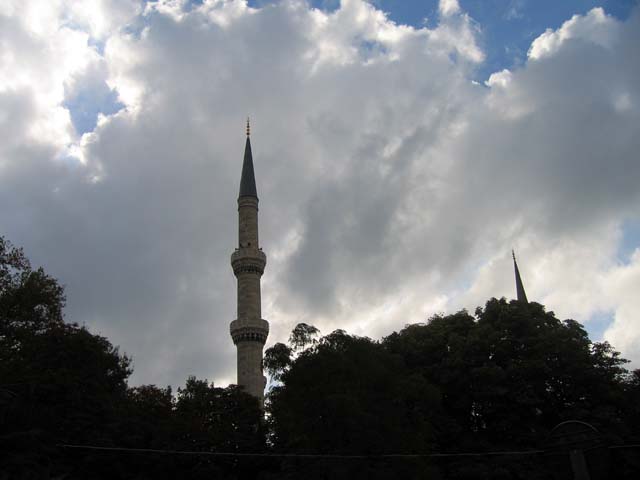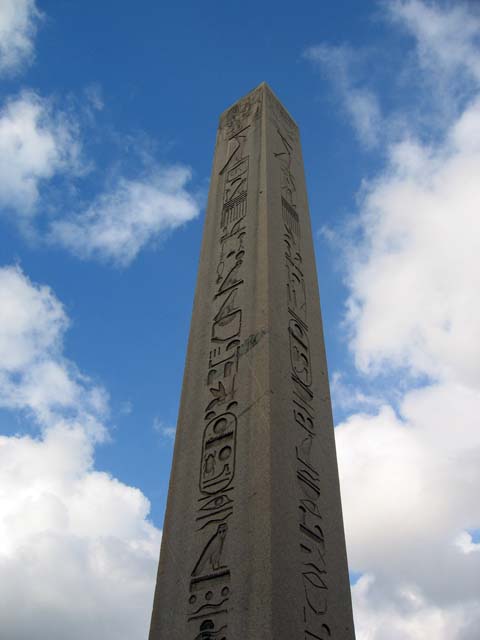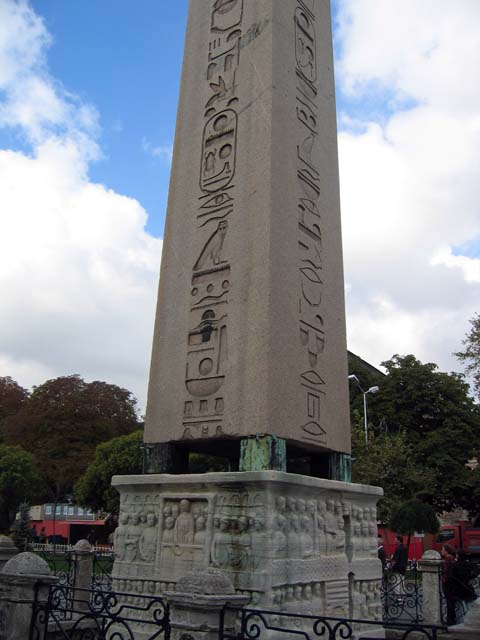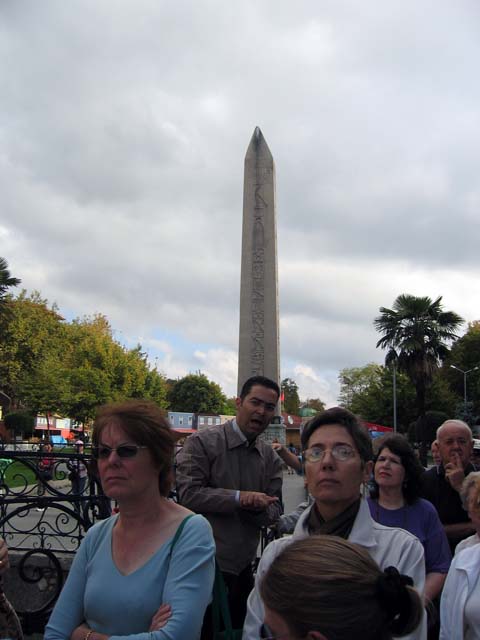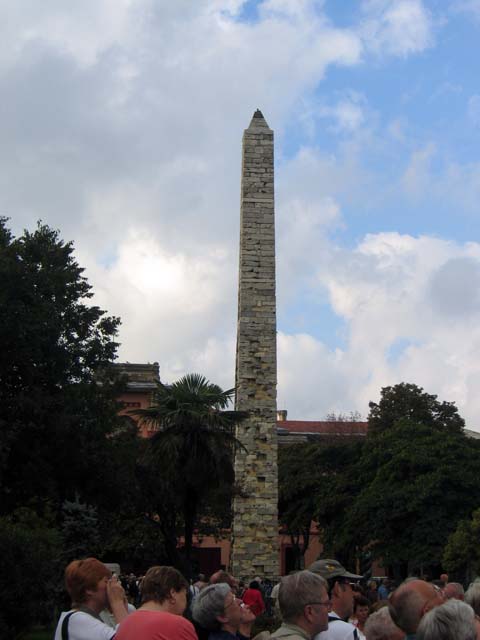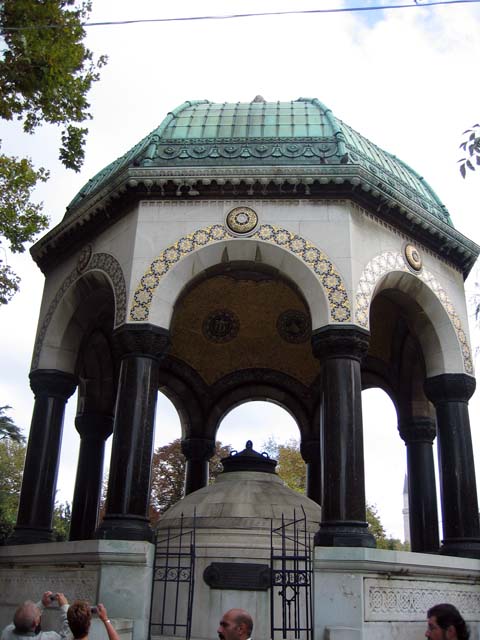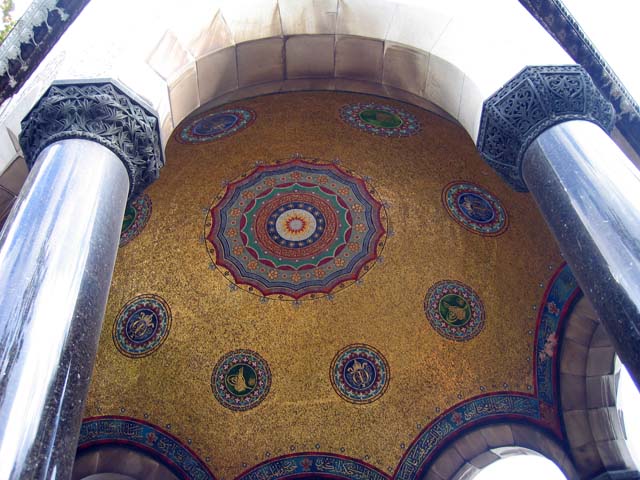|
Little is left of the gigantic stadium which once stood at theheart of the Byzantine city of Constantinople. It was originally laid out by Emperor Septimus Severus during his rebuilding of the city in the 3rd century A.D. It is thought the stadium held up to 100,000 people. The site is now an elongated public garden.
The road running around the square almost directly follows the line of the chariot racing track. But today there are no chariots racing. Instead, vendors are getting ready for the Holy month of Ramadan, which begins tomorrow -- the day I'm to fly home.
The Egyptian obelisk, which was built in 1500 B.C, stood outside Luxor until Constantine had it brought to his city. This beautifully carved monument is broken and is probably only one third of its original height.
It stands on a base, made in the 4th century A.D., showing Thodosius I and his family in the kathisma (royal box) watching various events. The four sides depict a chariot race; Theodosius preparing to crown the winner with a wreath of laurel; prisoners paying homage to the emperor; and the erection of the obelisk itself.
Mete tells all about it.
Next to the Egyptian obelisk is the Serpentine Column, believed to date from 479 B.C., which was shipped here from Delphi.
The heads of the three serpents were kinocked off in the 18th century by a drunken Polish nobleman. One of them can be seen in the Istanbul Archeological Museum, one's at the British Museum in London, and the third one is forever lost, apparently.
Another obelisk still standing but of unknown date, is usually referred to as the Column of Constantine Porphyrogenitus, after the emperor who restored it in the 10th century AD. It is also sometimes calle3d the Brazen Column, because it is thought to have once been sheathed in a case of bronze. Its dilapidated state owes much to the fact that young Janissaries (an elite military unit of the Turkish army organized in the 14th century and abolished in 1826 after it revolted against the Sultan) would routinely scale it as a test of their bravery.
The only other structure in the Hippodrome is a domed fountain which commemorates the visit of Kaiser Wilhelm II to Istanbul in 1898.
Nice, huh?
|

